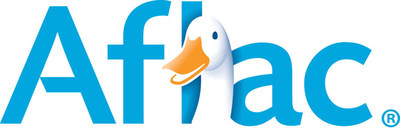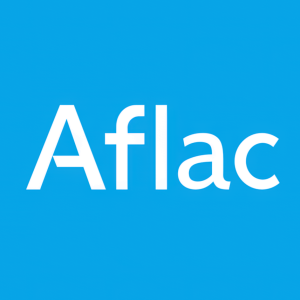Aflac study reveals the impact of paid leave on employers and employees
Rhea-AI Summary
Aflac (NYSE:AFL) has released its second annual Time Away Study, revealing significant challenges faced by employees covering for colleagues on leave. The study shows that 73% of employees experience workplace stress while covering for peers, and 41% face burnout during extended coverage periods over eight weeks.
Key findings highlight that mental well-being dropped 11 percentage points during coverage periods, with 27% of employees developing new health conditions attributed to increased workload. Despite 95% of leaders having access to recognition tools, 29% of employees received no recognition for additional work.
Aflac emphasizes the need for employers to implement proactive leave management strategies, including clear communication, regular check-ins, and support systems to prevent burnout and maintain productivity.
Positive
- Comprehensive study highlighting workplace challenges provides valuable insights for improving employee management
- 95% of leaders have access to recognition tools for acknowledging additional work
- Company demonstrates leadership in addressing workplace well-being issues
Negative
- 73% of employees experience workplace stress during peer coverage
- 41% of employees face burnout during extended coverage periods
- 27% of employees developed new health conditions due to increased workload
- 29% of employees received no recognition despite available recognition tools
Nearly 3 in 4 employees experience workplace stress or anxiety while covering for a peer1
According to the 2025 Aflac Time Away Study:
41% of employees experienced burnout when a co-worker's leave period extended beyond eight weeks.1- Mental well-being dropped 11 percentage points while covering for a peer.1
27% of employees who were diagnosed with a new health condition during or after their coverage period attributed it to the increased workload.118% of workers say a preexisting condition worsened while covering for a peer.173% of employees experienced at least moderate workplace stress or anxiety while covering for a peer.129% of employees said they did not receive any recognition for their additional work even though95% of leaders say they have access to recognition tools.167% of those newly diagnosed with a health condition while covering for a peer took time off to care for themselves.1
Aflac's study emphasizes the need for employers to adopt proactive leave and time away management practices to mitigate the risks of burnout and negative impacts on employee morale. As part of its ongoing efforts to support businesses and their employees, Aflac urges employers to take a more holistic approach to leave management — safeguarding access to time away and ensuring robust plans are in place to address the well-being of employees for the continued success of business operations. Proactive planning and clear communication, alongside recognition and support, can minimize the physical and mental impact on employees and foster a healthier, more productive work environment.
"We know that in today's environment, employers are increasingly cognizant of providing a better workplace for their employees, but this study reveals that the challenges of covering for a co-worker on leave can have a significant impact on productivity," said Jenny Merrithew, vice president, Marketplace Solutions at Aflac. "To ensure there is balance in time away programs and productivity, employers should take steps and create a strategy to support the long-term well-being of employees, especially during periods where they are covering for a co-worker on leave. The strategy should include clear communication, regular check-ins, and tools and support to help prevent employee burnout and boost their engagement."
Similar to business continuity planning for disasters, building robust leave contingency plans that foster a culture of consistency, communication, recognition and support for employees taking on additional work could reduce the overall impacts identified in the study. This work can shape and inform how employers can remain competitive with time away benefits and minimize the impact to productivity and well-being in the workplace.
"What we discovered through this research is that leaders may not be aware of the toll that longer leave coverage takes on their employees, especially on tenured employees who may appear better equipped to manage the increased workload," said JR Shamley, senior vice president of National Accounts Business Development and Growth Solutions at Aflac. "Leaders should ensure workers are supported, recognized and rewarded equally and commensurate with the amount of additional work that's expected of them."
Download the report to learn more.
ABOUT THE 2025 AFLAC TIME AWAY STUDY
This second annual Aflac Time Away Study, conducted in January 2025, examines the impacts of time away/leave (two-plus weeks) programs on the workers who remain to ensure business continuity during those leave periods. This year, to provide a more complete picture of
ABOUT AFLAC INCORPORATED
Aflac Incorporated (NYSE: AFL), a Fortune 500 company, has helped provide financial protection and peace of mind for nearly seven decades to millions of policyholders and customers through its subsidiaries in the
Group life, disability and absence services are provided by Continental American Insurance Company (CAIC); in
1 Time Away Study 2025. Aflac Incorporated. Published May 2025.
2 LIMRA 2024 U.S. Supplemental Health Insurance Total Market Report.
Media contact: Jon Sullivan, 706-763-4813 or jsullivan@aflac.com
Analyst and investor contact: David A. Young, 706-596-3264, 800-235-2667 or dyoung@aflac.com
![]() View original content to download multimedia:https://www.prnewswire.com/news-releases/aflac-study-reveals-the-impact-of-paid-leave-on-employers-and-employees-302535723.html
View original content to download multimedia:https://www.prnewswire.com/news-releases/aflac-study-reveals-the-impact-of-paid-leave-on-employers-and-employees-302535723.html
SOURCE Aflac









